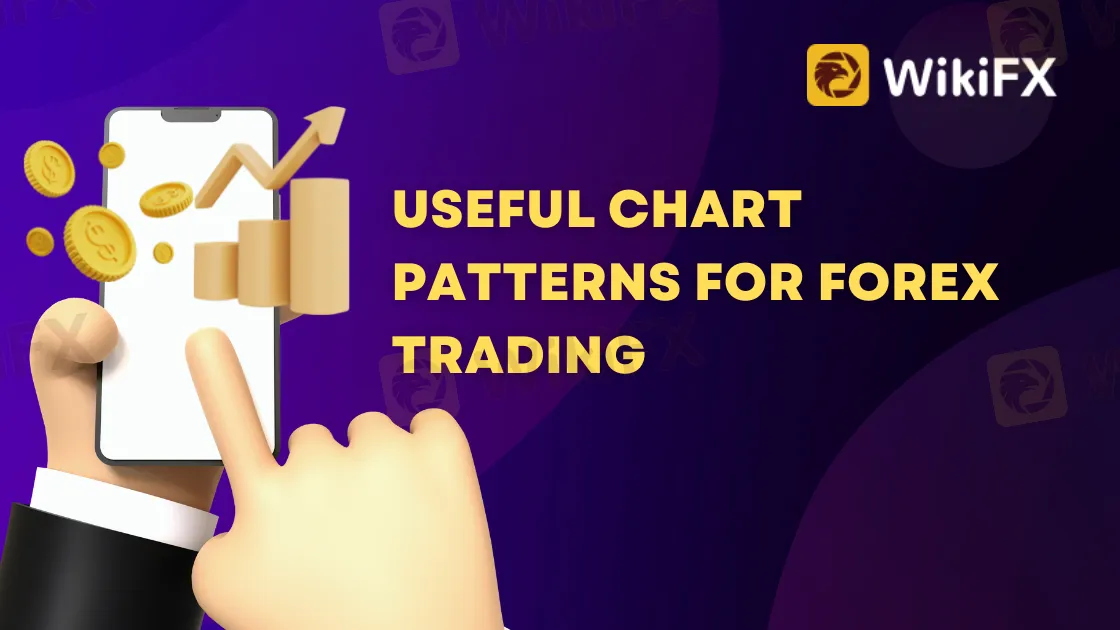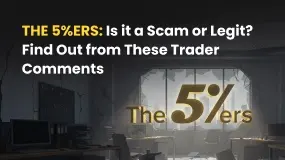简体中文
繁體中文
English
Pусский
日本語
ภาษาไทย
Tiếng Việt
Bahasa Indonesia
Español
हिन्दी
Filippiiniläinen
Français
Deutsch
Português
Türkçe
한국어
العربية
Useful Chart Patterns For Forex Trading
Abstract:Technical analysis includes chart patterns because they can help forex traders find trends, movements, and patterns in the way currency prices change. You will be able to benefit from these technical pricing patterns if you learn about these chart patterns.

There are several chart patterns, and we have already shown some fundamental and effective candlestick patterns. In this post, we will go over 10 more typical chart patterns that you should be aware of while trading in the forex market.
1. Head and Shoulders
One of the most reliable reversal chart patterns is the head and shoulders. This design, which resembles a head with two shoulders, has a huge peak in the center and smaller peaks on each side. The head and shoulders pattern indicates that the price will fall.

The first and third peaks will be smaller than the second, but they will all fall back to the same level of support, often known as the 'neckline,' as seen in the chart above. Once the third high has dropped back to the level of support, the market is likely to enter a bearish downturn.
2. Reverse Head and shoulders
The reverse head and shoulders pattern, on the other hand, happens after a downward trend and predicts an upward surge. An HS top means the end of a rising trend, while an HS bottom means the end of a falling trend and that prices may be about to go up.

The pattern can be seen when the price falls to a trough and then rises; when the price falls below the first trough and then rises again; and when the price falls again, but not as far as the second trough.
3. Double Top
A double top is another common bearish reversal pattern used by traders. It has two peaks, signaling dwindling buyer interest and the probability of a downturn. The “tops” are peaks that occur when the price reaches a level that cannot be breached. After reaching this level, the price will briefly bounce off it before returning to test it again.

The chart above shows that a top was created after a strong advance up and then a retracement down to a level of support. It will then produce another high before reversing from the current trend.
4. Double Bottom
The double bottom pattern, on the other hand, is a bullish reversal pattern that is diametrically opposed to the double top. This pattern has two low points in price, which show that buyers are becoming more interested and the price is likely to go up.

The chart above shows that following the last decline, the price developed two valleys since it couldn't fall below a particular level. The price then broke through the neckline and made a solid run higher.
5. Rising Wedge
As market fluctuations constrict between two sloping trend lines, wedges develop. The wedge comes in two varieties: rising and falling. A rising wedge happens when the price rises over time. Rising wedges indicate a bullish trend reversal, forming a negative market situation.

6. Falling Wedge
Falling wedges, on the other hand, are bullish. A falling wedge is formed by two downwardly sloping levels. As you can see in the image below, a falling wedge usually means that the price will go up and break through the level of resistance.

7. Ascending Triangle
The ascending triangle is a bullish continuation pattern that shows that the price is still going up. It can also show up as a reversal pattern near the end of a downward trend, but it is more often seen as a continuation pattern. A rising triangle happens when the price follows a rising trend line and then stops moving.

8. Descending Triangle
The descending triangle, like the ascending triangle, is a continuation chart pattern. The only difference is that it's a bearish continuation pattern that forms when the price goes down.
It may also form a reversal pattern towards the conclusion of an uptrend, however, it is more frequently regarded as a continuation chart pattern.

9. Symmetrical Triangle
An upper trendline connects a series of decreasing peaks and a lower trendline connects a series of rising troughs to form symmetrical triangular patterns. This pattern often indicates a time of consolidation inside a trend, after which the trend may restart. Furthermore, volatility often decreases as the pattern progresses. Symmetrical triangles may imply either bearish or bullish markets, and a breakout in either way marks the start of a new trend.

10. Bottom rounding
A chart pattern with a rounded bottom could mean either that the trend will continue or that it will change. During an upswing, for example, an asset's price may decline somewhat before rising again. This is a bullish continuation.
As you can see below, a bullish reversal rounding bottom would happen if the price of an asset was going down and a rounding bottom formed before the trend changed and started going up.

Stay tuned for more Forex Educational Articles.
Download the WikiFX App from the App Store or Google Play Store to stay updated on the latest news.

Disclaimer:
The views in this article only represent the author's personal views, and do not constitute investment advice on this platform. This platform does not guarantee the accuracy, completeness and timeliness of the information in the article, and will not be liable for any loss caused by the use of or reliance on the information in the article.
Read more

WikiEXPO Dubai 2025 Concludes Successfully — Shaping a Transparent, Innovative Future
On November 11, WikiEXPO Dubai 2025, hosted by WikiGlobal and co-organized by WikiFX, successfully concluded. As one of the world’s most influential Fintech expos, this event brought together more than 570 regulatory representatives, industry leaders, and innovation pioneers from across the globe. Through in-depth discussions on core issues such as regulatory compliance, the forex market, investment strategies, and sustainable finance, the event delivered a profound experience that masterfully blended intellectual depth with actionable insights.

The 5%ers Review: Is it a Scam or Legit? Find Out from These Trader Comments
Did you face reduced leverage and hiked fees without any explanation from The 5%ers broker? Do you find The 5%er rules strange for getting a funded account from this prop trading firm? Has the broker closed your trade inappropriately, preventing you from making gains in the forex market? All these allegations have dominated The 5%ers review segment online. Looking at this, the WikiFX team investigated and found some startling comments against the broker. In this article, we have shared those complaints. Read on!

BROKSTOCK Exposed: Traders Report Login Errors, Withdrawal Issues & Incompetent Customer Support
Is your BROKSTOCK trading account full of inefficiencies? Do the recurrent BROKSTOCK login errors prevent you from opening and shorting positions at a favorable price? Has the broker failed to honor your withdrawal requests? Do you face order execution price issues? Has the customer support service failed to resolve your queries? You are not alone! In this BROKSTOCK review article, we have shared some complaints that need a close introspection. Read on to explore them.

OmegaPro Review: Traders Flood Comment Sections with Withdrawal Denials & Scam Complaints
Has your deposit and withdrawal scenario worsened after the initial good experience at OmegaPro, a UK-based forex broker? Does the broker ask you to invest when withdrawing your funds? Did the broker officials trap you with their false promises of compound interest on your deposit? Have you found it impossible to transfer funds from your OmegaPro login to another broker’s account? Do you witness a lack of support when dealing with these unfortunate trading circumstances? These are no longer isolated complaints — they have allegedly become the reason for OmegaPro’s tarnished trust and reputation within the trading community. Read on as we share the OmegaPro review in this article.
WikiFX Broker
Latest News
BASF CEO: EU CO₂ Trading Is A "Destruction Mechanism" For European Industry
Is Fyntura a Regulated Broker? A Complete 2025 Broker Review
Zetradex Exposed: Withdrawal Denials, Account Freeze & Bonus Issues Hurt Traders
Is Forex Zone Trading Regulated and Licensed?
PINAKINE Broker India Review 2025: A Complete Guide to Safety and Services
Exness Restricted Countries List 2025 Explained
Is Uniglobe Markets Legit? A 2025 Simple Guide to Its Safety, Services, and User Warnings
Is Inzo Broker Safe or a Scam? An Evidence-Based Analysis for Traders
WikiEXPO Dubai 2025 “Welcome Party” Kicks Off Tonight!
He Trusted a WhatsApp Group and Lost RM659,000
Currency Calculator



